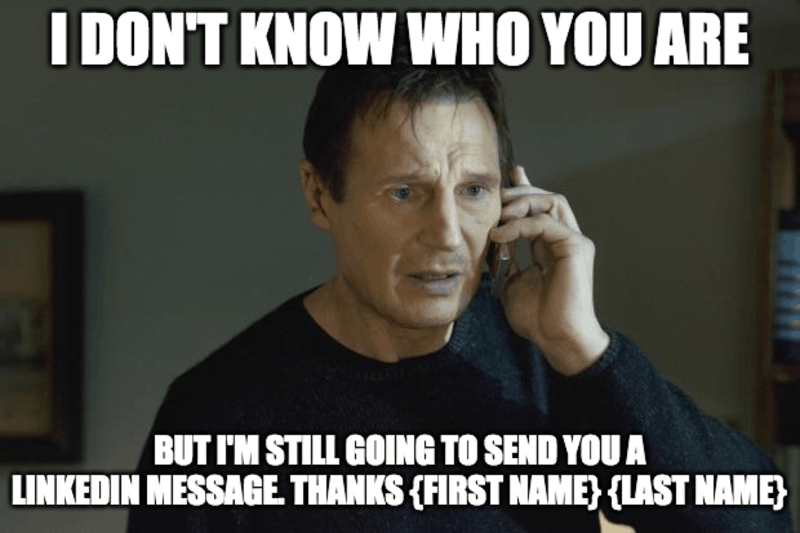LinkedIn is a powerful tool for professionals looking to connect with others in their industry, find new job opportunities, or grow their businesses. One of the most effective ways to use LinkedIn is through prospecting or reaching out to potential clients, partners, or employers. However, like any marketing or networking strategy, LinkedIn prospecting has both pros and cons that should be considered before diving in.
Pros of LinkedIn Prospecting
Easy-Peasy
The best thing about LinkedIn is that you can easily sign up and start prospecting (no credit card needed). It might be a bit challenging to grow your network first, but in a few weeks, you’ll get used to it when in 2 months you’d most likely have a great account with 500+ connections. Just imagine, you’ll get access to almost 1 billion people, being able to directly message decision-makers and sell your products. Sounds good?

Social Network Rules?
Direct sales are not the only way and there are plenty of strategies. You can explore relevant news or group members and warm up your leads through social activities, liking LinkedIn posts, or commenting on the right materials. This might help to get noticed and build relationships. Another opportunity that is unlocked for you – posting and liking sales/ marketing content. Your leads would be able to absorb the values of your product or get excited about your case studies.
One more point before we move on, you can find out if your competitors are connected to your target leads and if they like each other’s material. That might help you understand that you should use s specific offer, considering your advantages rather than something generic or usual.
Personal or Professional?
The last thing to be mentioned is that your messages can be not strictly professional. You are a real person with your own interests, posting whatever you want and commenting on your friends’ posts. I’d name it a creative atmosphere. Having that in mind you can be more relaxed than usual. It’s way easier to do social selling on LinkedIn, e.g. send a lead a gif or ask about something personal. Overall, LinkedIn feels like a kiddo of Email & Facebook, proving numerous opportunities for prospecting.
Cons of LinkedIn Prospecting
1. LinkedIn is the best place to sell, but you shouldn’t do massive outreach
Probably the most frustrating thing is that you can do sales prospecting, but if the LinkedIn algorithm decides you are too active, it will temporarily or permanently ban your account. Obviously, there are numerous limitations related to your account. The number of connections you can send is the most severe. The basic limit is from 400 to 600 connections per month or 100 to 150 sent connections per week. The precise value depends on your LinkedIn SSI (or Score if you want). Well, it seems we’ve just met a bottleneck 😅 Then let’s do clever outreach and focus on quality rather than quantity.
2. How to track your efficiency?
Another pain point is that you can not do outreach efficiently, since there is no built-in tool to track efficiency. Can you imagine a marketing department that sends Email campaigns and doesn’t track analytics, like deliverability, open rate, reply rate, etc? No. The same approach should be applied to LinkedIn outreach, but you can not track analytics, so we have a huge pain in the neck – defining efficiency and scaling.
3. Is your SDR team good enough?
Well. At least you can hire a team of experts, who would be sending the right outreach messages and bringing a lot of leads, right? Not really. Let’s disclose the third challenge – control. LinkedIn profile belongs to your employee and most likely they would not provide any access to you. Then how can you be sure of what is happening in your SDR team? How can you check if your SDR runs any campaigns? You can hear promises and plans every day, but the result might be missing. We can lay off the person, but before that, we have to give them a try and teach.
An audit is the best way to realize the extent of the problem. Will you be able to get access to their account or not? Can you be sure that your sales team would collect good examples/ messages for your audit? Do you think this process can be consistent and continuous if you have no access to their account? Sounds really bad, right?
4. Competition is growing
More and more companies do LinkedIn prospecting. At the same time, the number of automation tools is growing. Unfortunately, it might be resulting in meme situations.

5. Time flies
The clue for efficient lead generation is a “consistency & persistency” bundle. You should send follow-ups regularly. Social activities have to be used as well, e.g. likes, skills endorsement, and profile visits. A good flow will take a lot of daily work time for simple/ boring actions.
Obviously, the human factor will be spoiling the process regularly. What can be worst than that? The fact that it takes time to think about your next move or message. To be honest, it sounds like the process was created to automate it 😀 As a result, to benefit from LinkedIn outreach you have to spend an enormous amount of time on that.
6. Scale
Everyone in the crazy world wants to scale. When people discuss this topic they usually refer to skyrocketing through some growth hacks or optimized processes. What does it look like?
- The team works as a single mechanism, reaching out to the right companies/ leads;
- Everyone tests the same hypothesis and strategy to collect enough data and make data-driven decisions in terms of well-performing messages/ connections/ etc. Obviously, we must collect exhaustive analytics automatically to make it possible;
- The audit is managed on a weekly basis, making sure, everyone is spot on;
- LinkedIn outreach is combined with email outreach (and other additional channels) to reach the best results.
In conclusion, LinkedIn prospecting can be a powerful tool for professionals looking to connect with others in their industry, find new job opportunities, or grow their businesses. However, it is important to consider the pros and cons before diving in and to approach prospecting in a targeted, personalized, and professional manner.
If you are looking to boost your LinkedIn outreach and prospecting efforts, it’s best to do your research, be strategic, and make sure you’re reaching out to the right people. This will help increase your chances of success and make the most of your time and effort. Besides, LinkedIn outreach can be easily scaled, but it takes time & a lot of effort (and tools).
Get ready to explore the LinkedIn SSI score in the upcoming materials.
Automate your LinkedIn prospecting
